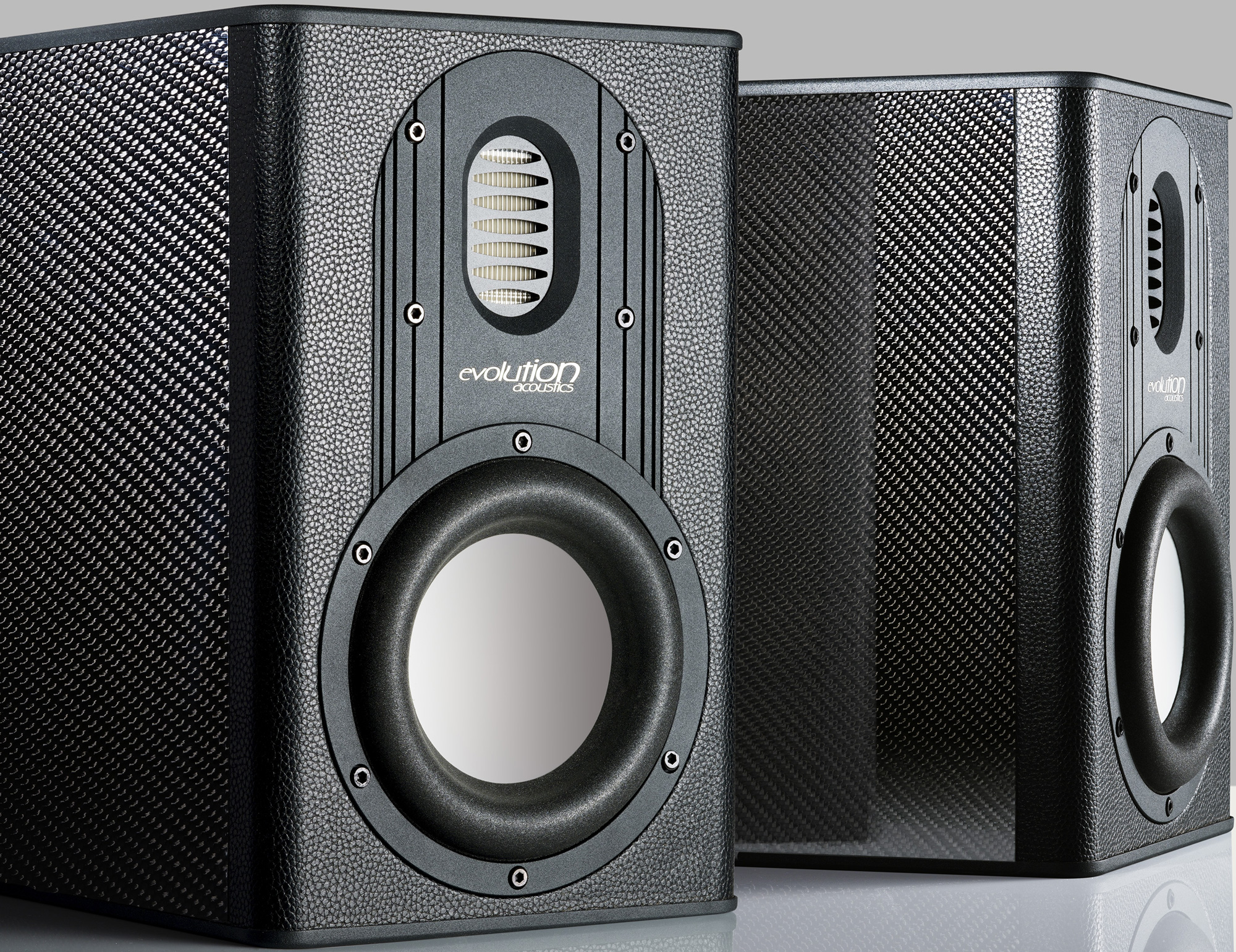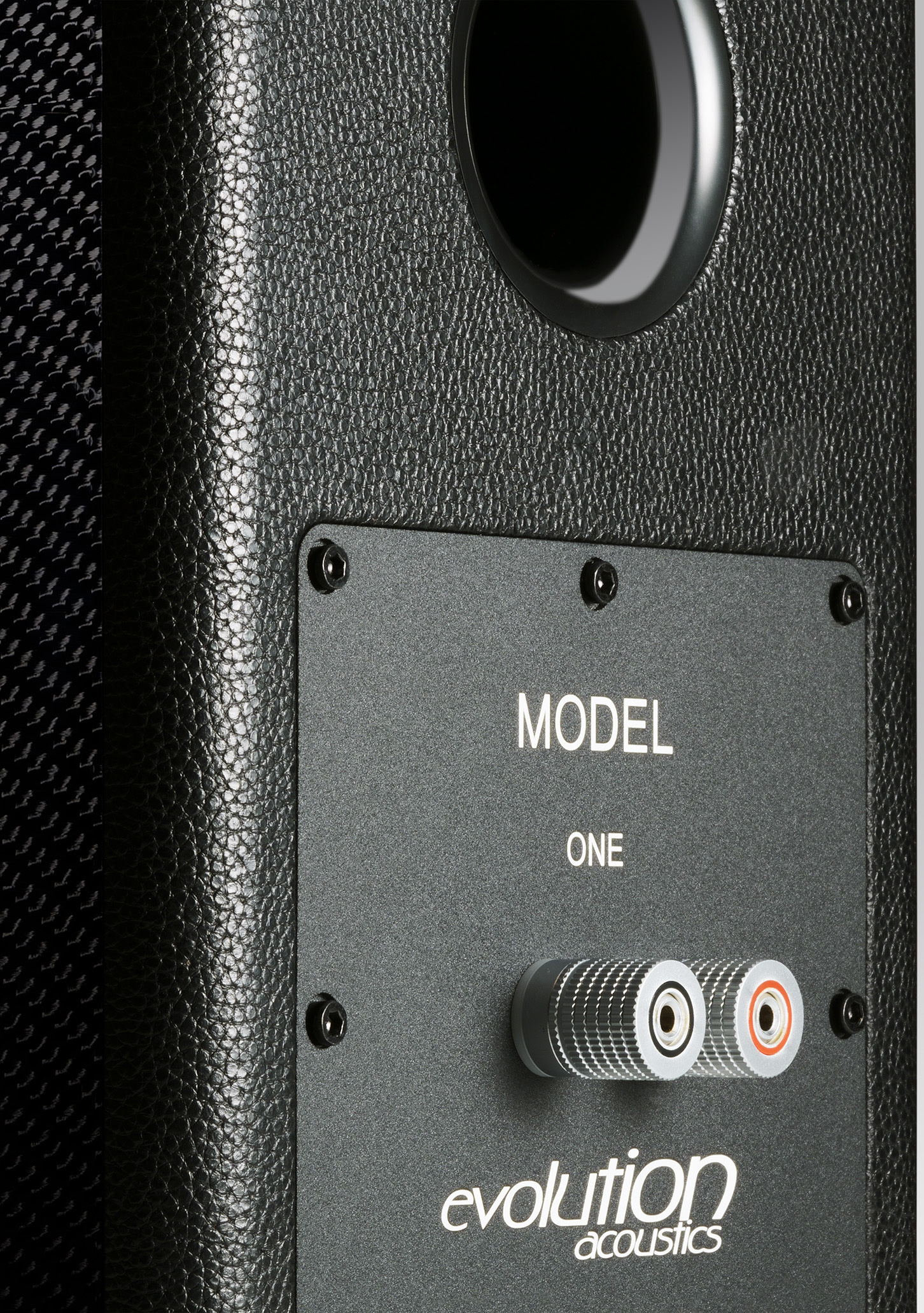Initially, my visual inspection of the speaker brought disappointment when I saw that despite having very robust speaker posts, the Model One was not bi-wirable. However, as I have listened to the speaker, I appreciate Kevin’s assertion that it is cleaner and more impactful due to the series crossover. Besides, I have a solution for the absence of bi-wiring! A single wired speaker can be upgraded simply by doubling higher AWG speaker cables, bringing them down to about 8 AWG. Care must be taken that all terminations are perfectly parallel at the amp(s) and speaker posts. Failure in that regard can be costly! It is not such a difficult task to do, and the results are definitive.
The Model One is a better speaker when either a lower AWG cable is used, or higher AWG speaker cables are doubled. The easiest way to accomplish it is by using one set of speaker cables with spade terminations and one with banana terminations. Iconoclast Cable’s Series 2 TPC and SPTPC Cables are my go-to speaker cables. In this instance, I paired one of each to give a tonal blend to the Model One, which was ideal. Purists will scoff at such methods, but I could care less. I am concerned with real world results, and doubling the speaker cables works splendidly for the Model One – for any single wired speaker I have used. Consider it a dividend on the fancy crossover in the Model One.
Performance
Small doesn’t have to mean low performance. Recently, I saw a sizable pickup truck with a car trailer pulling an MG Midget. The contrast in size was laughable, as the car was so small that it nearly could fit into the truck’s bed! Later the same day, I saw two strikingly different small cars, a Honda Civic Type R and a Subaru WRX. Care to guess which car is not on the same level of driving performance? So it is with small speakers; some are decidedly higher performance than others. To my ears, the Model One is high performance bookshelf speaker.
Physics cannot be manipulated, and the Model One does not pull off a magic trick in making the listener who is familiar with larger floor standing speakers think he is hearing one. No small bookshelf speakers can do that, and if the manufacturer or dealer insists that they can, run the other direction! There is a way, however, to split the difference, fooling the ears into thinking they are hearing a larger speaker, not in terms of macrodynamic capacity but in terms of soundstage size. No, the Model One does not explode the soundstage like a big dipole or even a 5-6’ dynamic speaker. But with the proper stands, it can elevate the soundstage in a pleasant manner.
Early in the preliminary discussion regarding the review, Kevin spoke of taller stands that would be agreeable to the Model One. Pleasant surprises may await those who read the Owner’s Manual, which instructs that the speaker should have its tweeter at ear level. If a buyer presumes placement of the speaker on a shorter stand, they will be forfeiting a great deal of performance. Using my 24” stands, the speaker’s tweeters were positioned well below ear height. Kevin’s recommendation stuck in my mind and prompted me to conduct one of my straightforward listening comparisons by elevating the speakers to see how much it affected their sound. I love such comparisons as they lead to breakthroughs that can be applied across many systems!
I decided to purchase what might be considered abnormally tall stands. Frankly, I did not buy taller speaker stands for the Model One. I am not excited to buy ancillary products for reviews that I am not compensated. Would you spend money simply to gain an impression of a speaker? I had just finished the review of the Colibri C2 Loudspeaker, which I chose to own as my first hybrid horn speaker. I intended the purchase of taller stands to bring a payoff for me with those speakers, regardless of the outcome of the Evolution Acoustics review.
While aspects such as bass extension are not influenced by lifting a bookshelf speaker, the height of soundstage is impacted positively. Not many makers of small speakers build skyscraper stands. However, looking back at the image of the MMMicro One from CES 2012, the speaker was lofted quite high. I heard the speaker on those stands and it was part of the reason the impression was favorable and prompted the request for a review. A similar stand may have been favorable for the Model One, but it appears that one was designed to operate specifically with the MMMicro One; the base of the speaker is bolted to the stand.
Initially, in the absence of a taller stand, I used a gimmick to shift the baffle, a trick that I often use with far larger floor standing speakers. In that case, I typically insert ¼” wooden coasters underneath the rear cabinet or spikes of the floor standing speaker to tilt it forward and draw down the soundstage. Huge floor standing speakers tend to shoot half the sound over the top of the listener’s head, a waste, really. By tilting the speaker’s baffle slightly forward, more of the grandeur of the speaker is aimed at the listener’s ears where it belongs!
In the case of the Model One on 24” stands, which placed the tweeter well below ear level, I jacked up its front end with the coasters to bring its baffle in line with my ears. Caution should be exercised when such maneuvers are attempted. Ensure that the speaker is stable on the stand if lifted in the front. It helped to focus the precision of the Model One, but it was still obvious the sound was emanating from a lower point. The taller stands would be needed to alter that impression.
After searching for a reasonably priced taller stand, I found the Sanus Steel Foundation Speaker Stands (SF) at 34” tall for $229.99, which are solid and stable enough. Over the course of the review period, I rotated into my room and onto the stands one additional speaker, the Wharfedale Opus 2-M2, a gem which has the darling 3” soft dome midrange like those used in PMC and ATC speakers. It appears the 3” soft dome is fading away in the newer models, being replaced with a 2” soft dome. I haven’t done comparisons, but I suspect that is not a good thing performance-wise. Larger drivers of nearly any sort tend to sound more mature, robust than smaller ones, and that is the case with the 2” tweeter of the Model one. I have used other speakers with a 1” folded ribbon-style tweeter and bigger seems to be holistically better. The larger tweeter of the Model One has a generosity to it that I do not hear from 1” ribbon tweeters.
I believe this is the stand recommended by Kevin when I spoke to him about wishing to have a taller speaker stand. Imagine a high-end speaker maker promoting a reasonable, sensible stand! Kevin made his recommendation based on one of the principles I espouse; put the most money on whatever touches the power and signal pathways. A CAMDAL speaker cabinet is effective because it directly influences driver performance, whereas an expensive stand has less impact since it doesn’t affect power or signal paths, thanks to the CAMDAL cabinet’s design.
I will not speak for Kevin, but in my comparisons, upscale footers, stands, and sundry items said to improve the sound of equipment and speakers did no better than objects such as a piece of plywood or a hard rubber hockey puck. I will not go so far as to say those who spend inordinately on stands and footers are getting ripped off, but based on my comparisons, they are not significantly enhancing their sound over use of more economical devices. I will discuss this, and many more topics related to extracting the best sound from a system in my upcoming book The Audiophile Laws.
- ← Previous page
- (Page 2 of 3)
- Next page →

